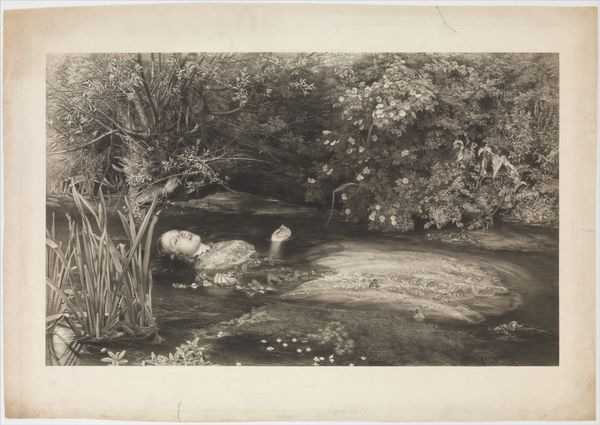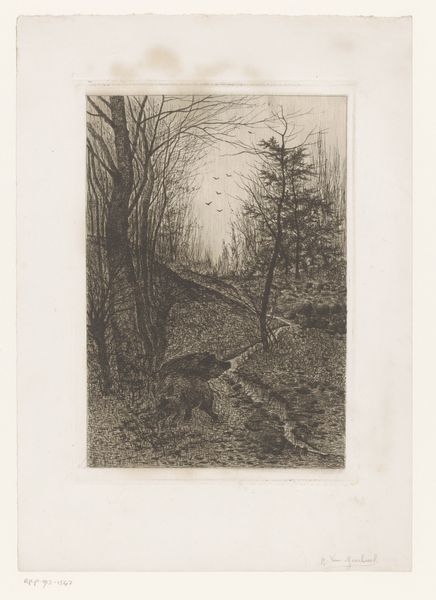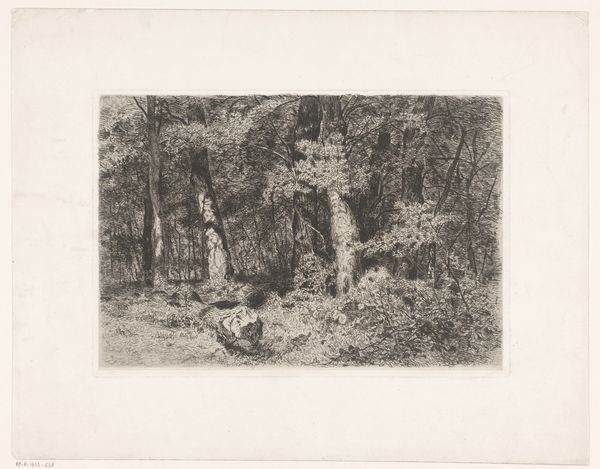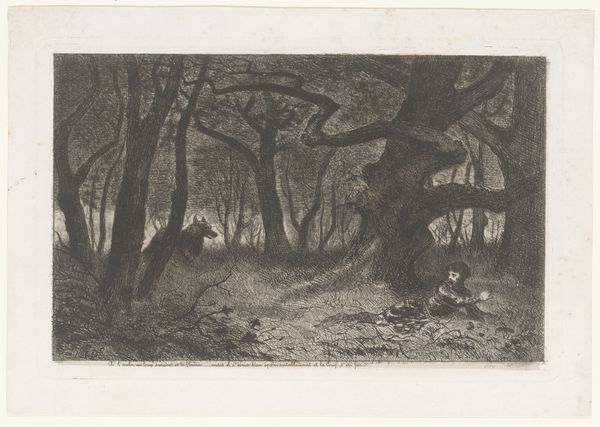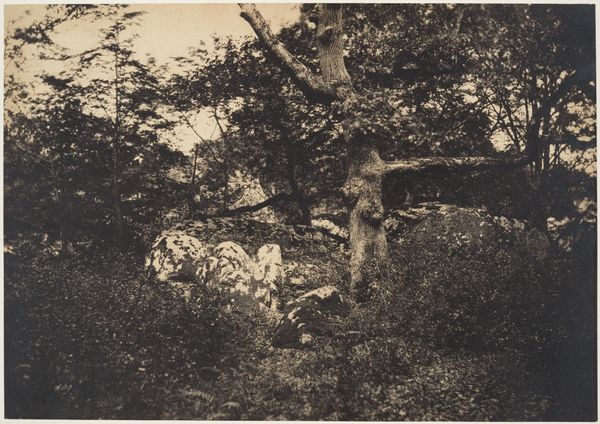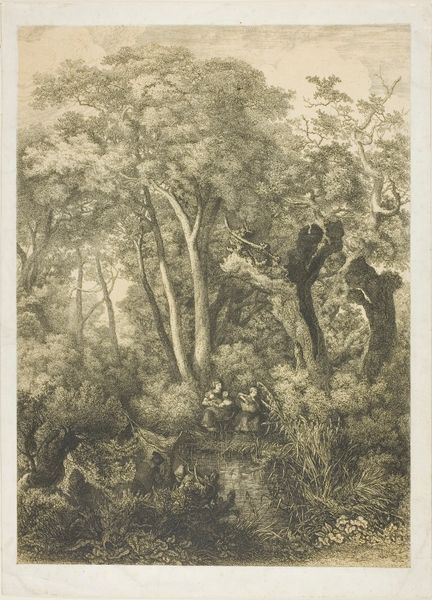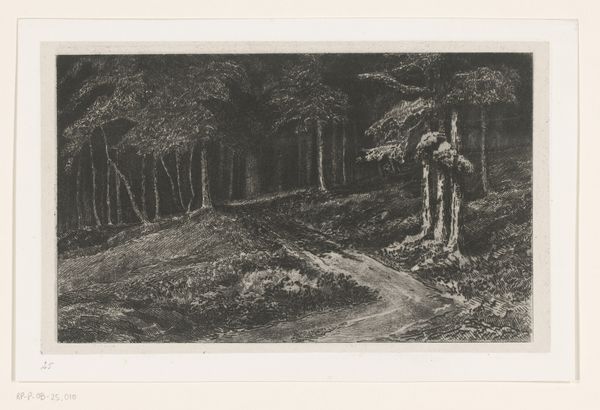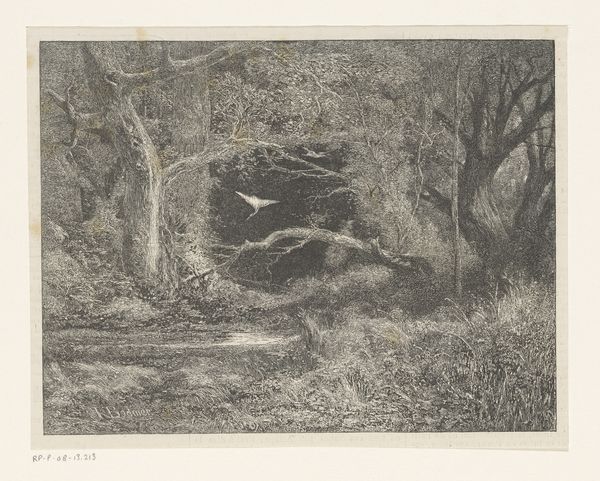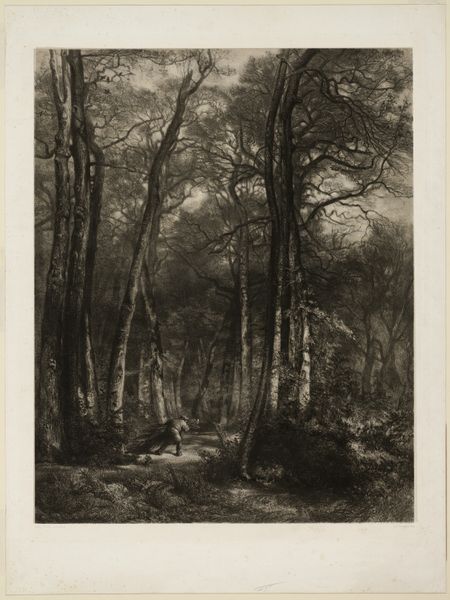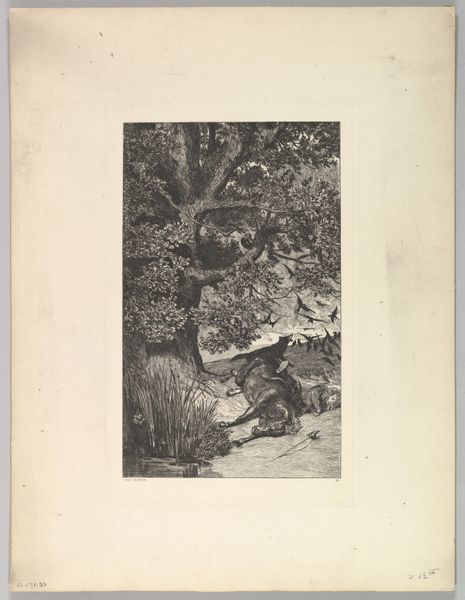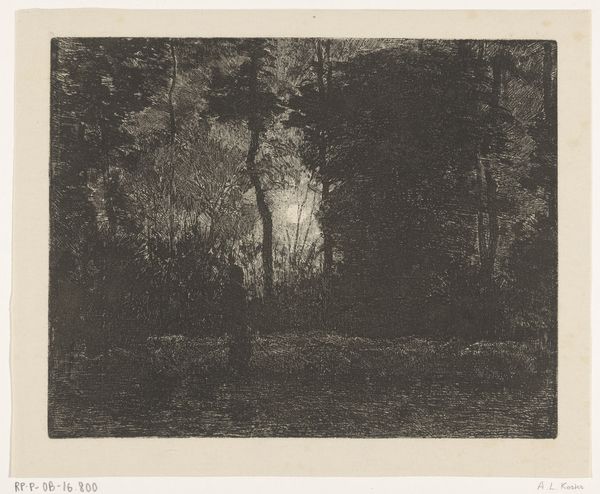
drawing, paper, chalk, charcoal
#
pencil drawn
#
drawing
#
16_19th-century
#
landscape
#
charcoal drawing
#
paper
#
pencil drawing
#
romanticism
#
chalk
#
charcoal
Copyright: Public Domain
Editor: Here we have "Brook landscape with boys," a drawing in chalk, charcoal and pencil on paper, attributed to Otto Scholderer from the 19th century. It has a rather pensive mood; very monochrome and subdued. I'm intrigued by the contrast between the densely shaded areas and the open space in the foreground. How do you interpret this work? Curator: It’s interesting that you pick up on the pensive mood. Consider that the 19th century, particularly in Germany where Scholderer was active, saw the rise of Romanticism, often tinged with social unease. How do you think this quiet scene might speak to larger issues of that time? Perhaps reflecting on lost innocence or anxieties surrounding industrialization and urbanization? The boys themselves, are they simply part of the landscape, or are they placed there to raise particular questions, especially in connection to nature and the individual's place in it? Editor: That’s a compelling perspective. I hadn’t considered it in light of industrialization, but now I see a tension between the natural world and the hint of human presence. Do you think Scholderer might be making a comment about social class through the depiction of the boys? Curator: It's definitely worth exploring. Look at how they’re positioned low in the composition, almost hidden. One could argue it subtly critiques the social hierarchies, positioning the working class—perhaps represented by these anonymous figures in nature—as marginal figures, overshadowed by the dominant forces of society symbolized by the looming, powerful trees. The very act of representing them, however, offers a voice, even if a quiet one. Editor: That makes me see it in a completely different light. Thank you for pointing out these deeper layers of meaning. Curator: My pleasure. It’s by engaging with these complexities that we can begin to understand art as an active participant in broader cultural conversations.
Comments
No comments
Be the first to comment and join the conversation on the ultimate creative platform.
